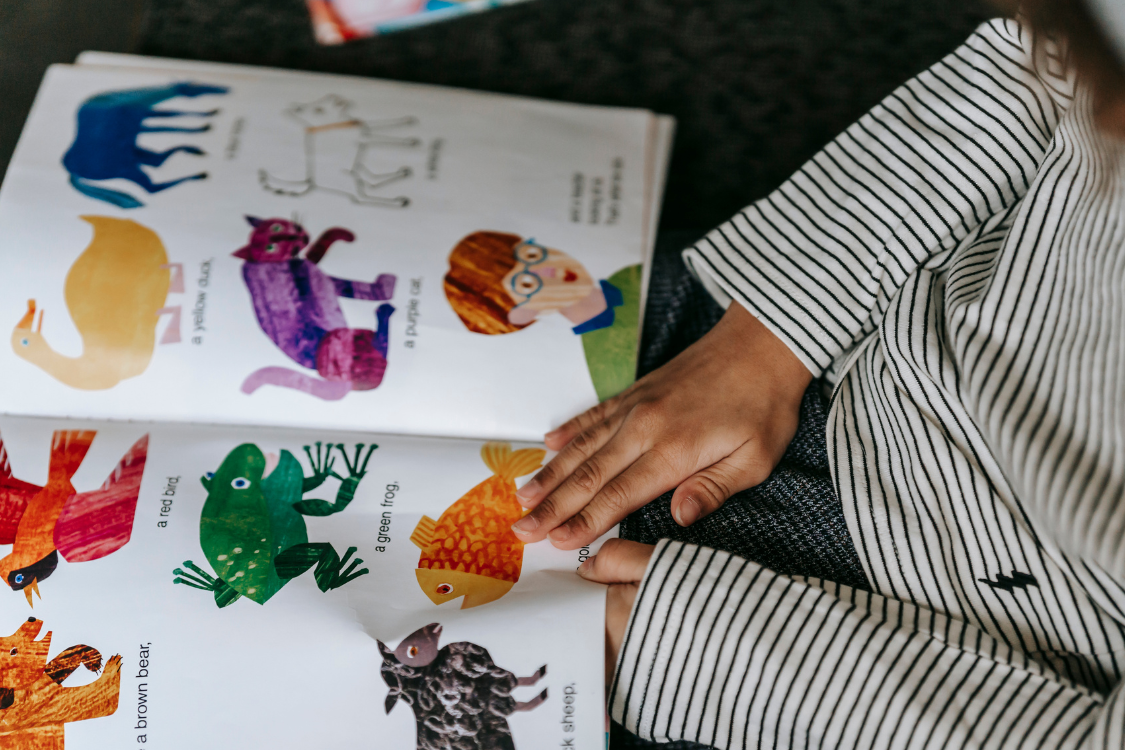Phonics Games for the Classroom: 10 Teacher-Approved Activities
Learning to read shouldn’t feel like a chore. When children associate reading with enjoyment, they’re more likely to develop into lifelong readers who approach books with enthusiasm rather than dread. This is where phonics games enter the picture, transforming what could be mundane letter-sound practice into engaging, memorable learning experiences that children eagerly anticipate.
Research consistently shows that playful learning environments enhance knowledge retention. The magic happens when children are so engrossed in play that they don’t realize they’re cementing critical literacy skills that will serve them throughout their lives.
The Science Behind Gamified Phonics Learning
The effectiveness of games in phonics instruction isn’t just anecdotal—it’s rooted in cognitive science. When children play games, their brains release dopamine, a neurotransmitter associated with pleasure and motivation. This creates a positive learning environment where children are more receptive to new information and more likely to persist through challenges.
Educational research has consistently demonstrated that gamified learning creates multiple neural pathways in the brain. When students engage with phonemic concepts through visual, auditory, and kinesthetic activities, they develop stronger connections and better retention. This multi-sensory approach is particularly beneficial for struggling readers who need diverse ways to process information.
Games also support differentiated instruction, allowing teachers to address various learning needs simultaneously. While playing in small groups, children who need additional support can receive it without feeling singled out, while advanced students can be challenged with more complex variations of the same game.
Top 10 Phonics Games That Actually Work
1. Sound Hopscotch
Transform your classroom floor into a phonics learning station with Sound Hopscotch. Draw or tape a traditional hopscotch grid, but instead of numbers, write target letters, digraphs, or blends in each square. As children hop, they must pronounce the sound represented in each square. For advanced learners, have them generate a word using that sound before hopping to the next square.
Materials needed: Chalk, masking tape, or printed letters laminated for durability
Skills addressed: Letter-sound correspondence, phoneme isolation
Adaptation for struggling readers: Start with just five squares using highly distinguishable sounds
2. Phoneme Fishing
Fill a small kiddie pool or box with magnetic letters and provide children with fishing rods made from dowels, string, and magnets. Call out specific sounds, and children must “fish” for the corresponding letters. For added challenge, call out words and have students fish for all the letters needed to spell them.
Materials needed: Magnetic letters, homemade fishing rods, container
Skills addressed: Letter-sound correspondence, phoneme segmentation
Group size: 3-4 students
3. Blend Card Relay
Divide students into teams and place letter cards at one end of the room. Call out a word, and one student from each team runs to select the letters needed to spell it, bringing them back one at a time. The first team to correctly blend and read the assembled word wins the round.
Materials needed: Letter cards (preferably large format)
Skills addressed: Blending, letter-sound correspondence, teamwork
Best for grades: K-2
4. Sound Sorting Treasure Hunt
Hide objects or picture cards around the classroom. Children search for items, then sort them into containers labeled with different beginning sounds, vowel patterns, or rhyme, depending on your instructional focus.
Materials needed: Small objects or picture cards, labeled containers
Skills addressed: Phoneme categorization, initial/medial/final sound identification
Adaptation: For advanced students, use multiple phonemic features for sorting
5. Phonics Bingo
Create bingo cards with target phonics patterns instead of numbers. Call out words that contain these patterns, and students mark the corresponding square. The first to complete a row wins. This classic game can be easily adapted for different phonics skills.
Materials needed: Custom bingo cards, markers
Skills addressed: Pattern recognition, phoneme identification
Versatility: Can focus on blends, digraphs, vowel patterns, or syllable types
6. Sound Swap
Students sit in a circle, each holding a letter card. The teacher reads a word, and students with the relevant letters must arrange themselves to spell it. Then call out a new word that can be made by changing just one letter, and students must rearrange accordingly. For example, “cat” to “hat” to “hit” to “hip.”
Materials needed: Large letter cards
Skills addressed: Phoneme manipulation, spelling patterns
Group size: 6-10 students
7. Nonsense Word Challenge
Create cards with decodable nonsense words. Students take turns drawing cards and reading the made-up words using their phonics knowledge. Award points for accurate decoding, with bonus points for creating a silly definition or using the nonsense word in a sentence.
Materials needed: Nonsense word cards
Skills addressed: Decoding, phoneme blending
Why it works: Nonsense words prevent reliance on memorization and ensure students are truly applying phonics skills
8. Phonics Scavenger Hunt
Create a list of phonics features (e.g., “something with a short ‘a’ sound” or “something with the ‘sh’ digraph”). Students explore the classroom or school to find and document items that match each criterion, either by writing them down or taking photos if devices are available.
Materials needed: Scavenger hunt lists, writing materials or devices
Skills addressed: Real-world application of phonics knowledge, phoneme identification
Extension: Can be sent home as a family engagement activity
9. Sound Slap
Place letter cards or phonics pattern cards on a table. Call out a sound or word containing a target pattern, and students race to slap the corresponding card. The first to correctly identify the phonics element keeps the card, with the goal of collecting the most cards.
Materials needed: Letter or phonics pattern cards
Skills addressed: Quick phonics recognition, auditory processing
Small group size: 2-4 students
10. Phonics Board Games
Adapt classic board games like Candyland or Chutes and Ladders with phonics challenges. To move spaces, students must read words, identify sounds, or complete phonics tasks appropriate to their level. Commercial options exist, but teacher-created versions can be perfectly tailored to your classroom’s current focus.
Materials needed: Adapted board game, challenge cards
Skills addressed: Various phonics skills depending on design
Flexibility: Easily adaptable for different skill levels and phonics elements
Implement Games Effectively in Your Phonics Curriculum
While phonics games are unquestionably valuable, they’re most effective when thoughtfully integrated into a comprehensive literacy program. The Science of Reading reminds us that systematic, explicit phonics instruction forms the backbone of effective reading education. Games should enhance—not replace—this structured approach.
Consider using games at strategic points in your instructional sequence: as engaging warm-ups to introduce new concepts, as practice activities to reinforce recently taught skills, or as assessment tools to gauge understanding in a low-pressure environment.
When selecting games, ensure alignment with your current instructional focus. If you’re teaching short vowel sounds, prioritize games that specifically target this skill. This intentional alignment strengthens the connection between explicit instruction and playful practice.
Also, consider the grouping implications of different games. Some activities work best with partners, small groups, or whole-class participation. Strategic grouping can address specific learning needs—pairing struggling readers with supportive peers or creating homogeneous skill groups for targeted practice.
Differentiating Phonics Games for All Learners
One of the greatest strengths of game-based learning is its adaptability for diverse learning needs. With thoughtful modifications, the same basic game structure can challenge advanced readers while supporting those still mastering foundational skills.
For struggling readers, consider these adaptations:
- Reduce the number of phonics elements addressed in each game session
- Provide visual supports, such as sound-spelling cards, for reference
- Allow more processing time by adjusting game pacing
- Use larger print and high-contrast materials for visual clarity
- Pre-teach key concepts before game play
For advanced readers:
- Introduce more complex phonics patterns or multisyllabic words
- Add time constraints to build automaticity
- Include writing components alongside reading activities
- Challenge students to generate their own examples
- Incorporate unfamiliar words to push vocabulary development
English language learners benefit from games that:
- Include visual representations alongside text
- Explicitly connect to vocabulary development
- Provide opportunities to hear correct pronunciation
- Allow for choral responses before individual turns
- Incorporate physical movement to reinforce meaning
How to Know Your Phonics Games Are Working
While the smiles and engagement during game time provide immediate feedback, intentional assessment helps ensure these activities are driving actual learning outcomes. The most effective teachers regularly gather data on student progress, using both formal and informal measures.
Before implementing new phonics games, establish baseline performance on target skills. This might involve quick checks of letter-sound knowledge, nonsense word reading fluency, or application of specific phonics patterns in writing. After several weeks of incorporating games targeting these skills, reassess to measure growth.
Dynamic Indicators of Basic Early Literacy Skills (DIBELS) offer research-validated tools for monitoring phonics progress. These brief assessments can be administered periodically to track improvement in areas like phoneme segmentation fluency and nonsense word fluency—both critical indicators of phonics mastery.
Beyond formal assessments, observe students during game play.
- Are they applying the target skill correctly?
- Do they show increasing confidence and speed?
- Are they beginning to self-correct errors?
These observations provide valuable information about the effectiveness of your game-based instruction.
Parent feedback can also reveal the impact of your phonics games. When children spontaneously point out phonics patterns in environmental print or eagerly practice reading at home, you’re seeing evidence that your classroom games are fostering a transfer of skills to
Make Phonics Games Part of Your Teaching Toolkit
The most successful implementation of phonics games happens when they become an integrated, expected part of your literacy instruction rather than occasional “special” activities. Consider establishing a predictable routine for game-based practice, perhaps during small group rotations or as a whole-class activity to start or end the literacy block.
Create a designated area in your classroom for phonics games, with materials organized and accessible. This might be a shelf labeled “Phonics Fun” or activity bins coded by skill. When students can independently access appropriate games during choice time or center rotations, you’re fostering both literacy skills and student autonomy.
Document your most successful games in a teaching journal, noting specific adaptations that worked well for different students. This reflective practice helps refine your approach over time and builds a personalized resource you can share with colleagues or refer to in subsequent years.
Remember that while the games themselves are important, your enthusiasm and engagement as the teacher significantly impact their effectiveness. When you model enjoyment of phonics activities, students are more likely to develop positive associations with reading instruction.
Game On for Reading Success
The research is clear: when children enjoy learning, they learn better. Phonics games transform potentially dry skill practice into engaging experiences that children eagerly anticipate. By thoughtfully selecting and implementing these activities, you’re not just teaching letter-sound correspondence—you’re fostering a love of language that can last a lifetime.
As you incorporate these games into your classroom, remember that the goal extends beyond phonics mastery to developing confident, enthusiastic readers. The laughter during Sound Hopscotch and the focused concentration during Phonics Bingo are stepping stones toward this larger aim.
For more creative, evidence-based literacy activities and the latest research on effective phonics instruction, regularly visit Phonics.org. Our team is committed to supporting your teaching journey with practical tools and trusted information that help all children become successful readers.










